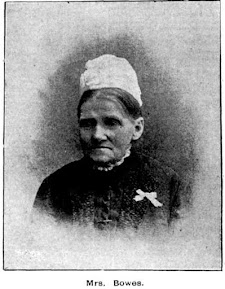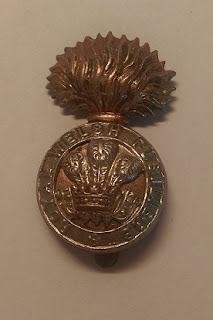An example of how good education can lead to greatness!
I walk past many, many monuments in various parts of Rookwood and often take a photo of one that catches my eye with the intention of researching the person/s who lie beneath it. Unfortunately time being what it is, I often run out of it and many of these "finds" remain in my photo album (sometimes forgotten I have to admit). Not today....a random reference was brought to my attention, I found the photo and started "digging" - well so to speak. This is what I found.
WILLIAM JOHN STEPHENS
William was born in July
1829 in Levens, Westmorland, England to the Reverend William Stephens, the
vicar of Levens, and his wife Alicia. He was the eldest child with nine
siblings and descended from a long line of vicars. William was a bright
student, won many prizes and was school captain. He was a scholar at the
Queen's College, Oxford gaining a B.A in 1852 and an M.A. in 1855. William
gained first class honours in the classics, became a fellow of his college, a
lecturer in 1854 and a tutor in 1855-1856.
He was appointed foundation
headmaster of Sydney Grammer School in 1856 and set sail for these shores. With
others William organised an advance curriculum but enrolments were slow mainly
due to the fees being considered too high and therefore believed to be “exclusive.”
He disagreed with his mathematics master, Edward Pratt, over organisation and
discipline. Ten years later the Trustee's investigated Pratt's complaints,
mainly that William had banned the cane as he disagreed with corporal
punishment. The inquiry agreed with Pratt and accepted William's resignation despite
his pleas. The following year William built and opened his own private school
known as The New School (and later as Eaglesfield from 1879) in Darlinghurst
with fifty of his former pupils. The new school was a success, winning the
respect of his pupils who performed well in examinations. (Nothing like a bit
of healthy revenge!).
Although his qualifications
were in the classics and mathematics, William had a keen interest in the
science of natural history and was involved in the early years of the Philosophical
Society of NSW, a founding councilor of the Entomological Society of NSW and
later treasurer. He was a founding member of the Linnean Society of NSW in
1874, holding various roles as well as president on several occasions. In 1879
he helped to found the Zoological Society of NSW and was a founding
vice-president of the NSW branch of the Geographical Society of Australasia.
William held other appointments and was a trustee of the Free Public Library of
NSW from 1870 and its president from 1885-1890.
In 1882 William was
appointed to the new chair of natural history at the University of Sydney and
to the W.H. Lovell lectureship in geology and physical geography. During his
term he largely planned and developed the Macleay Museum (now closed with the
collection transferred to the Chau Chak Wing Museum), working with Professor Liversidge
for the institution of a Bachelor of Science. In 1890 the title of his chair
was changed to geology and paleontology.
William John Stephens died
suddenly at his Darlinghurst home in November 1890 of kidney disease and lies
in the old Anglican section of Rookwood Cemetery. He was survived by his wife,
Anna Louise, whom he had married in July 1859 and by a son and daughter. The
following year his classical and scientific library of over 1400 books and
nearly 200 pamphlets were bought by the Free Public Library.
William wasn't the only
talented person in his family. His brother Thomas emigrated to Australia in
1855 with the intention of being a pastoralist. He decided to head to Tasmania
and accepted the appointment of Inspector of Schools subsequently becoming the
Chief Inspector of Schools for the Colony. Thomas had a large part to play in
the organisation of the system of primary education and was the first to
introduce a standard of instruction for the schools as well as a scheme of
classification for teachers.
William's son Charles, was a
civil engineer working for the Public Works Department and married an
Argentinian woman who was the grand-daughter of a Count. He was cremated and is
commemorated in the rose garden at the Eastern Suburbs Memorial Park.
His daughter, Ethel Anna, displayed an artistic talent from an early age. She initially concentrated on
flower painting that gave way to portrait and landscape painting. In 1886 she
had her work shown in London and became the first student to enroll at Julian
Ashton's School of Art in Sydney. After her father's death in 1890, she established
herself as an artist and art teacher, conducting classes from Eaglesfield in
Darlinghurst Road. In 1892 Ethel became the first woman elected to the council
of the NSW chapter of the Royal Art Society. In 1894 she became a founding
member of the breakaway group of the Society of Artists and by 1897 was the
sole woman among the eight members of its committee. In 1910 she helped
establish the Society of Woman Painters later serving as its President. Ethel Anna spent three years of her life from 1920-1923 in London and Paris exhibiting her
works and giving talks about her experiences as an art student.
Ethel Anna died at her Vaucluse
home in 1944. A portrait of her father is owned by the University of Sydney and
another by the Linnean Society in Sydney.
William John Stephens' success in life
shows that education is the key to success and is vital for children from all
walks of life to be able to compete on a level playing field. It’s quite something that a vicar’s son travelled to the other
side of the world, founded educational facilities and gave so much of his knowledge to others. He and his
siblings (and his children) are a credit to his forebears!
William John Stephens is also commemorated in the scientific name of an Australian venomous snake – Hoplocephalus stephensil!!
References used in this blog
consisted of ancestry.com; Australian Dictionary of Biography by Cliff Turney
for William John Stephens and Neil Smith for Thomas Stephens; Wikipedia and
Wikitree; “Odd Roads to be Walking” book by Paul Finucane and Catherine Stuart; etc.
Rookwood Cemetery
Discoveries
or simply send me a personal
message via
lorainepunch@gmail.com
Next week I have something to share with you that came via a follower of this page. I'm sure you will be impressed!





_(10559871275).jpg)



Comments
Post a Comment